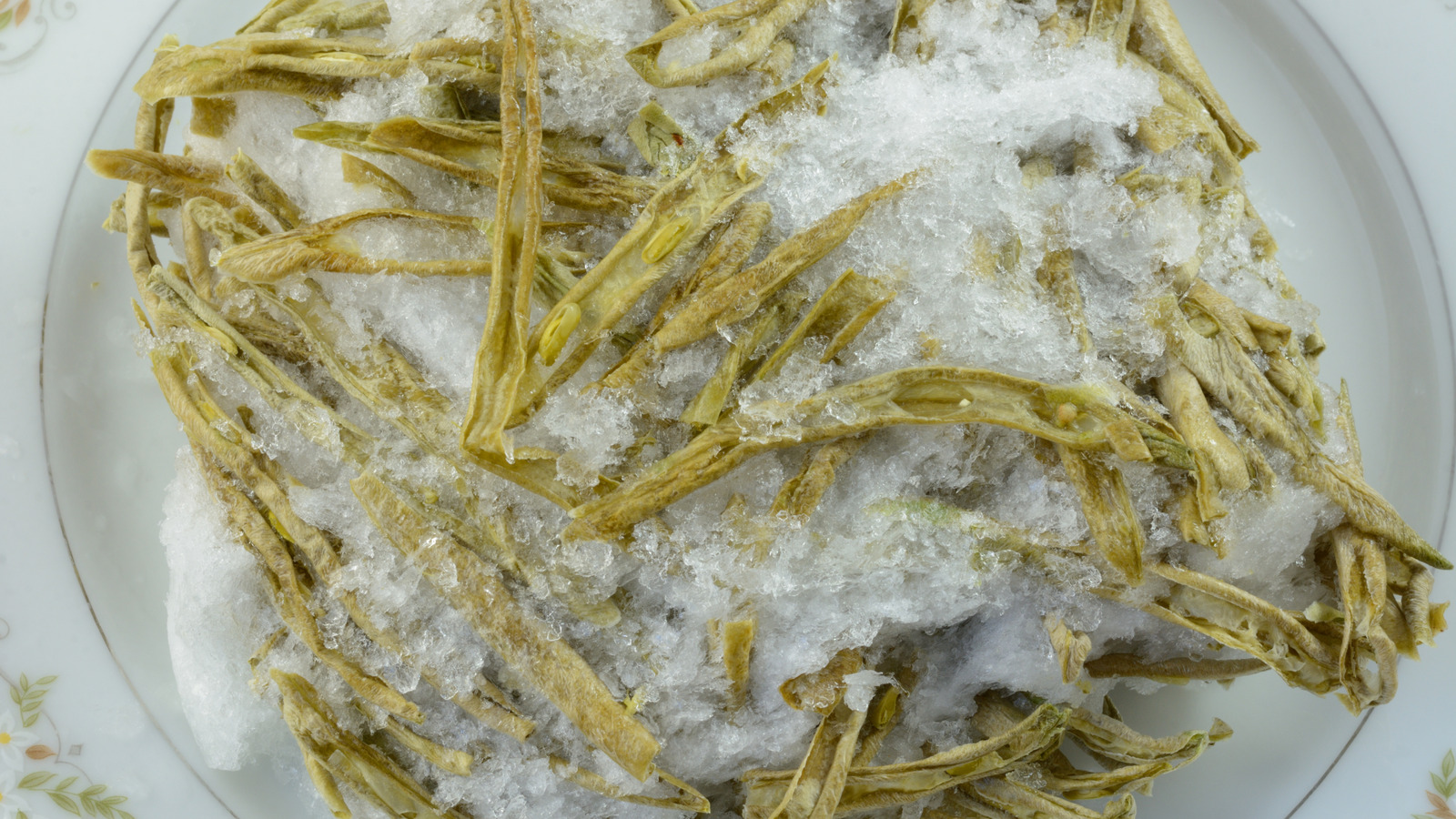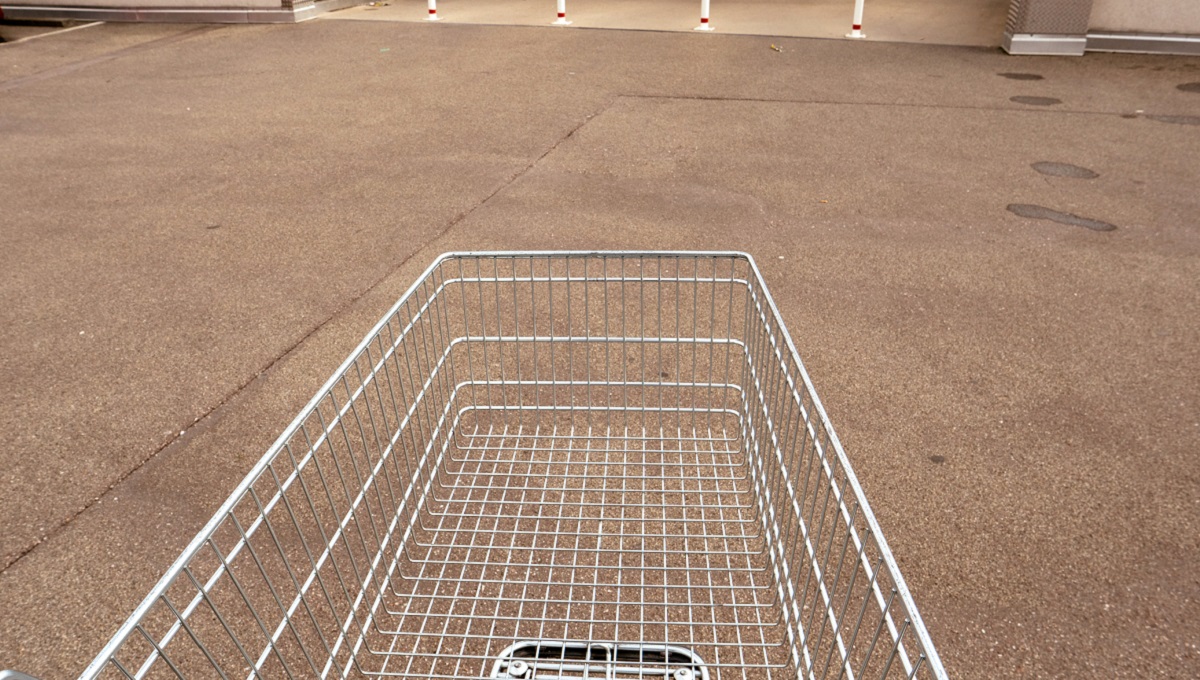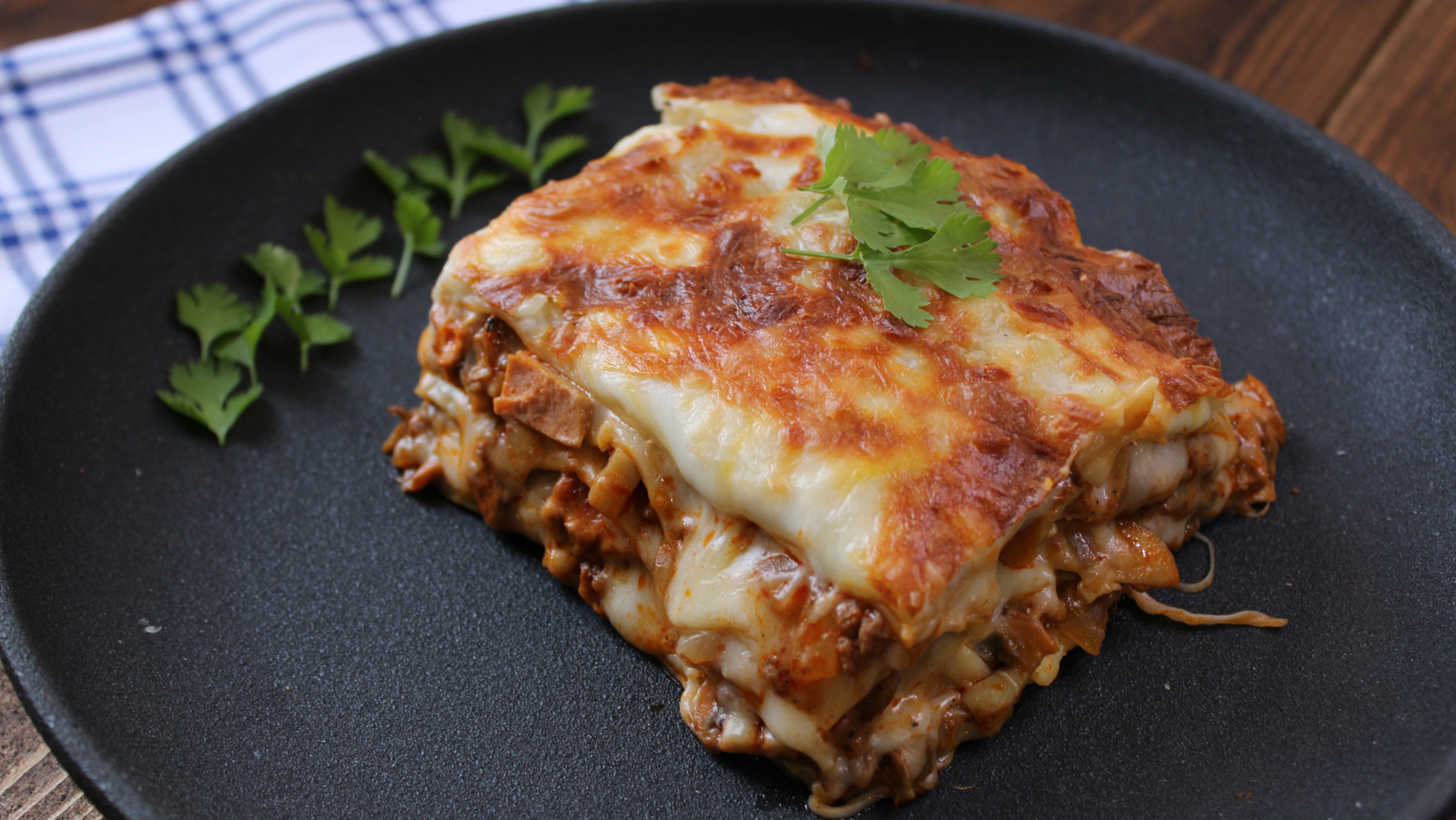
We may receive a commission on purchases made from links. The invention of freezers completely revolutionized the way we purchase, store, and eat foods. Before these appliances were widely available, the idea of purchasing in bulk and keeping shopping trips to once a week (or once a month, even) felt impossible.
Now, it's the standard experience. But freezers are not without their drawbacks. If you've ever gone to grab meat or other frozen items out of your freezer only to find it covered in ice, discolored, and looking dehydrated, you've seen freezer burn — and likely wonder why this happened.

Is it a safety issue, or can the food still be eaten? Was there any way to prevent this from happening? During my more than 15 years of experience in the food industry, I spent a good deal of time managing freezer inventories for both bakeries and hot food restaurants. To protect investments and ensure the products we needed were always on hand, it was crucial I monitored for signs of freezer burn (or spoilage) and worked to correct mistakes I found while early enough to do so. I then transferred this skillset to my home life, where I've bought my meats and other frozen foods in bulk for decades and used best practices to prevent freezer burn.
Today, I'm sharing my experience, so you can understand this phenomenon and know exactly how to prevent it. Freezer burn happens because of moisture loss The scientific reason freezer burn happens is a process called sublimation, which happens when solid ice turns into vapor without first turning into a liquid. The liquid phase is important because when ice in your frozen foods thaw, it reintroduces water and natural juices back into the meat.
When this is skipped, all the ice crystals in your food simply evaporate, leaving it dried out. In other words, when the surface of any food is left exposed to freezing cold air, it dries out, and you're left with freezer-burned meat, vegetables, or fruit. There will be big visual cues when your frozen food items are exposed to air, which you're likely already familiar with.
Meat, in particular, will become distinctly discolored and may appear grey, brown, or brownish-red, with a rough-looking texture. Vegetables can also discolor, but generally become a lighter or darker version of themselves, which isn't as noticeable. Excessive ice crystal formation and increased hardness are other signs.
However, it's important to not confuse mild freezer burn with signs you should throw away your frozen food , like bad odors or any changes in food following a power outage. Freezer burn can't happen without air exposure Freezer burn can only happen if frozen food is exposed to the air. Your freezer uses cold, dry air to keep products frozen and safe for long-term storage, but this air should never directly touch the surface of your foods, and should instead freeze them indirectly.
Any foods that are left open to the air can and will end up with freezer burn — the risk increases the longer items are exposed. The most common culprit for air exposure is improper packaging, but temperature issues and lengthy freezer stays can also be to blame. One warning sign to watch for is condensation, which signals that either temperatures have increased or that there's too much air and moisture inside the containers.
Other signs you may be at risk for freezer burn include a significant amount of ice buildup on foods or in the freezer itself, as well as the freezer's internal temperature rising above 0 degrees Fahrenheit. Since temperature fluctuations can lead to food spoilage, it's crucial to address these issues immediately. Freezer burned food tastes strange If there aren't obvious visual cues, you'll definitely notice foods are freezer-burned when you try to cook them.
The changes in moisture level and texture will lead to foods tasting "off" in a way that varies by product. Fruits may taste mildly rotten, whereas vegetables may have a strong cardboard flavor — both fruits and vegetables can taste like plastic or chemicals. Meat most often tastes rancid, but might have flavors you'd describe as artificial, bland, or overdone.
Generally, the chemical and artificial tastes of freezer-burned foods are distinct and reminiscent of what a walk-in freezer smells like. The smell will also be strange, but you won't likely notice this when you first pull items from the freezer — there's generally only an overly frozen smell initially. Once you begin cooking your food, though, you'll notice a strong smell that's musty, stale, or reminiscent of burning plastic.
Meat, in particular, may smell rancid or like cardboard. Eating freezer burned food is safe Despite a gross smell and taste, freezer-burned food isn't harmful. According to the United States Department of Agriculture (USDA) , food stored in the freezer at the appropriate temperatures will always be safe to eat.
Appropriate temperatures are anything below zero degrees Fahrenheit because it renders things like bacteria and other potentially harmful pathogens dormant. Since freezer burn is a taste and texture issue, not a safety one, you could attempt to eat these products. The simplest option is to cut off any obviously freezer-burned pieces and cook the remaining like normal.
However, this only works if food is mildly affected. For more seriously affected foods, proteins will need a good marinade to make them more flavorsome, and this rosemary herb marinade is a good option. Heavily seasoning freezer-burned foods or using them in soups and stews to mask the flavor and texture are also potential solutions.
While these techniques may work for some situations, it likely won't work for any food that's too heavily freezer-burned. If you can't make it palpable based on your own preferences, food may need to simply be thrown away. To prevent bugs and foul odors from breeding in your garbage bags, place freezer-burned items into plastic storage bags before disposing of them.
You need to maintain proper freezer temperatures Maintaining proper freezer temperatures will reduce condensation, and therefore humidity — meaning it can save your food from freezer burn. Plus, there's the significant added bonus of preventing foodborne illnesses, making this one prevention tip you'll want to prioritize. Of course, keeping your freezer consistently cold isn't as straightforward as many think and you can't take a "set it and forget it" approach.
A few useful tips include reducing how often you open the freezer door and not leaving that door open any longer than absolutely necessary. You may find it helpful to use a chest freezer to separate long-term storage items from those you'll use quickly. Also avoid adding hot or warm foods straight into the freezer and instead opt for cooling them in the refrigerator first.
One of the best things you can do is invest in an external freezer thermometer. Unfortunately, things can go wrong with your freezer's built-in setting, like mechanical malfunctions or inaccurate readings due to placement. I like this two-pack of PECULA analog thermometers because it's less than $10 and gives you the ability to get readings from two separate locations in your freezer.
I recommend placing one at the front of your top shelf and one at the back of your bottom shelf to get the best reading of your whole appliance. Check these a few times each week to ensure they read below zero degrees Fahrenheit, which is conveniently shown in blue. Properly prepare your foods before freezing them Foods that have been properly prepared are less likely to end up freezer-burned.
There are three primary techniques for this: Pre-cooling, blanching, and flash freezing. You can use these for most leftovers, fruits, and vegetables, save for a select few that can be transferred to the freezer immediately, like onions, peppers, winter squash, broccoli, carrots, and tomatoes. Pre-cooling means placing items like leftovers into the refrigerator for a few hours before transferring them to the freezer.
Vegetables should be blanched before freezing them , which involves partially cooking them. You'll want to use it on fresh produce like black-eyed peas, leafy greens, green beans, cauliflower, and asparagus, among others. To blanch vegetables, drop them into boiling water for a few minutes and then transfer them to ice water to stop the cooking process.
Remove them once they're cool to the touch, and freeze. Flash freezing is a technique requiring a special blast chiller that can be used for small portions of most fruits, vegetables, meats, and baked goods. True flash freezing works by rapidly freezing food items to preserve their structural integrity at a cellular level — ice crystals form so fast they don't have time to grow, which stops them from damaging the food.
While your home freezer can't do this, you can get similar results with fast freezing. This involves laying individual items out on a baking sheet so they don't touch and placing them in the coldest part of your freezer. Once frozen, store items in airtight containers.
Switch your food's packaging for long-term freezer storage This prevention tip is mostly applicable to meat, but may apply to other foods in certain situations. The packages you get your meat in at the store aren't sturdy enough for long-term storage because they're thin and flimsy. If you're not going to use the meat within three or four days, you should transfer it to a more durable, airtight option instead.
Ziplock bags are an excellent option, but make sure you pick up the ones marked for freezer use since they'll be stronger and often have a double-locking zipper. Freezer-safe airtight containers and heavyweight plastic wrap are also good options. If you know something will be in the freezer for a month or more (like when you purchase meat in bulk), consider both wrapping it in plastic wrap and then placing it in a ziplock bag for extra security.
Of course, the best option for long-term freezer storage is vacuum sealing because it removes all the air — plus, storing food in bags will maximize your freezer space . I recommend this Potane precision vacuum sealer that has four different food modes and allows you to seal two bags at once. Remember to label everything with the item's name and the date you put it in the freezer.
Don't be afraid to keep your freezer packed full You can freeze almost anything to postpone its expiration date and prevent spoilage, and you may be surprised by some of the foods you can freeze , like milk, cream, butter, bread, nuts, and eggs, among others. In fact, we encourage you to start freezing more items because keeping your freezer as full as possible might help prevent freezer burn by keeping your items colder. Each frozen food in your freezer essentially acts like a giant block of ice, helping to keep the temperature below freezing.
This is yet another reason why you should consider a deep freezer, especially if you purchase meat or vegetables in bulk. You can pack the deep freezer and keep it full at all times, ensuring your items don't become freezer-burned during long-term storage. If you choose to go this route, I recommend transferring weekly items from your deep freezer to your primary one all at once, to reduce how long your freezer stays open.
Although freezers should stay as full as possible, there still needs to be room to let air circulate. An easy option is to leave a distance of about two fingers between each stack of items. Another idea is to use magazine holders or freezer-safe plastic bins to group similar items together while maintaining some space for air to flow.
Use the oldest foods first FIFO is an acronym that stands for "first in, first out," and it's one of the first things kitchen professionals learn during their training. It's also an acronym you'll want to commit to memory — not just for preventing freezer burn, but for everything involving food. As the name suggests, it reminds you to use the oldest food items first.
Doing this helps prevent freezer burn, since the risk increases the longer something stays frozen. In other situations, it can ensure you use items by their expiration date and avoid food waste or spoilage. To implement FIFO in my own home, I always take care when putting away foods in my pantry, fridge, or freezer.
When I bring new groceries in, I pull older items to the front and store the new ones behind them — this way, I never accidentally grab something new when there's an older choice available. Another easy tip is to label your foods and make a habit of checking the expiration dates, to help you with your FIFO procedure. Freeze in small batches This isn't a freezer burn prevention tip you'll need to utilize if you're only adding one or two things to your freezer, but it becomes crucial if you're doing bulk prep and freezing.
This could be during a seasonal harvest, after a successful hunting trip, or when scoring a deal on large quantities of food. In any of those situations, you'll want to freeze your foods in small batches to prevent raising the temperature in your freezer — which won't only increase the risk of freezer burn, but also the risk of food spoilage. If you have a lot of things that need freezing, add only a few to the freezer at a time and place the rest in your fridge.
Refrigerating some first can also help bring down their temperature and make the freezing process go faster. After a few hours, transfer a few more items into the freezer. Repeat as many times as necessary.
You can set a timer on your phone to remind yourself when to make the switch. Handle frozen items with care Shoving items around in the freezer during storage or when looking for something can lead to tears in packaging. Once there are holes in the plastic bag or wrap, the risk of freezer burn significantly increases because the food is now exposed to air.
Double-wrapping items can help prevent this, but it isn't a foolproof method. Instead, you'll want to handle the products in your freezer with care. There are several ways to help protect your frozen items.
For example, you could make it a habit to carefully stack items to the side when looking for something in a chest freezer rather than pushing everything around. Preferably, you can keep everything in the freezer when stacking them, but it's okay if you have to move them to a table, counter, or chair, as long as you're quick to put them back. For a standing freezer that's connected to your refrigerator, the best option is to be purposeful in your initial stacking.
Try to ensure everything is visible and easily accessible from the front. If you have to create more than one row horizontally, stack items neatly so they can easily be set aside..














